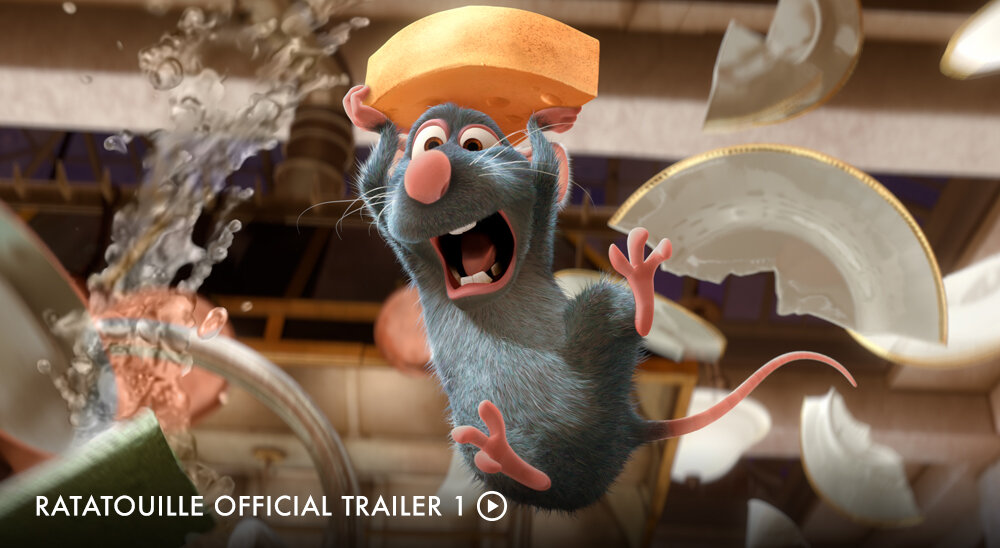

“The Grim Eater,” splendidly voiced by the man Bird wrote the part for, Peter O’Toole. Gusteau, sadly, is no longer among the living, done in by, among other things, the acid words of cadaverous food critic Anton Ego, a.k.a.

Remy’s hero is the legendary Parisian chef Auguste Gusteau, whose “anyone can cook” motto he takes to heart.

Someone with the soul of a poet as well as such a highly developed sense of taste and smell that his father uses him as a poison tester, Remy ignores his family’s garbage-eating proclivities and insists, “If you are what you eat, I only want to eat good stuff.” Of course, it doesn’t hurt to have a character as endearing as Remy (winningly voiced by comic Patton Oswalt) as a protagonist. And it does it all, an amusing “Quality Assurance Guarantee” boasts in the closing credits, with “100% Genuine Animation! No motion capture or any other performance shortcuts were used in the production of this film.” They’ve made “Ratatouille” so imaginative, good spirited and funny that it not only blurs the line between reality and fantasy, it manages to blur it between species as well. Yet this is exactly what Bird and his gang accomplish. And asking audiences to accept them as heroes is a riskier gambit still. Yes, our hero Remy walks on his hind legs (the better to keep his front paws clean for eating) and has a face as expressive as that of a Yiddish theater actor, but his fellow rats swarm in such realistic packs it is a real gut-check to see them scurrying about. As much as story, director Bird and his team love great chases, wild rides and wacky adventures, and setting this film both in a breathtakingly beautiful Paris and the unnerving sewers beneath the city offers ample opportunity for all manner of visual play.Īlthough mice have been members in good standing of the animation community at least since Ub Iwerks drew Mickey Mouse in 1928, the idea (which started with animator Jan Pinkava, who shares a story credit) of making a rat the hero of a major motion picture is a lot nervier than having penguins or other cuddly folk in the first position.Īnd, to its credit, “Ratatouille” is surprisingly candid about letting rats be rats.
Ratatouille cartoon full#
“Ratatouille” also takes full advantage of what the medium of computer animation offers. Whereas the tendency in so much of today’s animation is to be glib and on the surface, “Ratatouille” and its Pixar brethren have carved out a place for themselves by being genuinely smart and sophisticated in ways that please audiences as much as critics. It takes risks and goes places other films wouldn’t dare, and it ends up putting rival imaginations in the shade. The story of another creature that refuses to be ghettoized, in this case a rat - yes, a rat - with the palate of an epicure and a passion to be the greatest chef in the world, “Ratatouille” is as audacious as they come. When Pixar executive producer John Lasseter says, “There’s a level of depth, complexity and humor to this film that I don’t think any Pixar film has had before,” he’s not giving in to hyperbole, he’s getting at the heart of Bird’s concerns. That’s somewhat ironic, because as his new “Ratatouille” demonstrates, what makes Bird so unusual is that he doesn’t really think of himself as an animator at all.įrom his exceptional previous features (“The Iron Giant” and “The Incredibles”) through this one, Bird has refused to ghettoize himself, refused to back off from his passion to make movies whose animated surface doesn’t stop them from touching the same emotional bases as live-action fare. IF we are living in a golden age of animation - and we are - one of the reasons is writer-director Brad Bird.


 0 kommentar(er)
0 kommentar(er)
